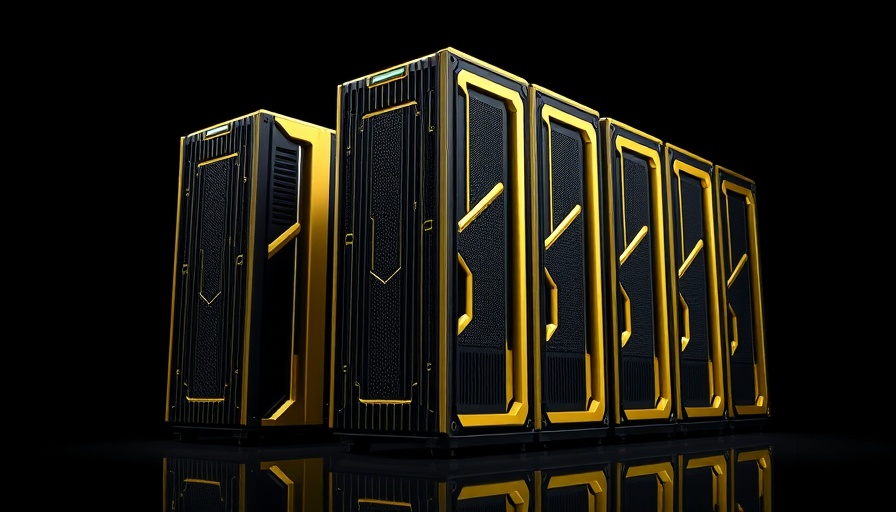
Revolutionizing AI with Personal Supercomputers: Nvidia's DGX Spark and Station
Nvidia has made significant waves in the tech world with its latest reveal at the GTC 2025 conference: two groundbreaking personal AI supercomputers, DGX Spark and DGX Station. These machines, powered by the innovative Grace Blackwell chip platform, are positioned to bring high-performance AI capabilities directly to developers, researchers, and enterprises. Jensen Huang, Nvidia's CEO, heralded these supercomputers as the "computer of the age of AI," aiming to democratize AI development and make it more accessible than ever.
The Power Behind DGX Spark and DGX Station
The DGX Spark supercomputer packs an impressive punch, boasting up to 1,000 trillion operations per second (TOPS) and is powered by the GB10 Grace Blackwell Superchip. This compact yet formidable system is designed for agility and edge computing, enabling real-time processing and inferencing of AI models directly where data is generated. In layman's terms, this means developers can fine-tune and deploy their AI software right at the source of data, enhancing both efficiency and responsiveness to dynamic conditions.
On the other hand, DGX Station elevates desktop computing to new heights. With the newly designed GB300 Grace Blackwell Ultra chip and a staggering 784GB of memory, it is engineered to handle the most demanding AI workloads right from a workstation setup. This creates a scalable platform for developers to engage in large-scale model training and intricate simulations.
Why This Matters for AI Developers and Businesses
This new class of supercomputers signifies a pivotal shift in accessibility to AI technology. Previously, organizations looking to harness machine learning and AI needed vast data centers filled with expensive, high-end gear. Nvidia is effectively giving the power to innovate back to individual developers and smaller companies, thus breaking down the barriers of entry into the AI landscape.
The implications for various sectors are vast. AI researchers can prototype models locally, reducing reliance on cloud infrastructure while offering enhanced privacy and lower latency. For industries like healthcare, finance, and even autonomous driving, this means quicker access to analytical insights and operational efficiencies.
The Challenge of Implementation and Cost
While the benefits of these powerful machines are undeniable, it is essential to discuss some challenges. The cost of entry for these systems will be significant, posing a barrier for smaller startups and individual developers. Both DGX Spark and DGX Station are marketed as high-end solutions, and obtaining them may require a considerable investment.
Furthermore, the power and capability of these supercomputers will demand robust infrastructure and energy resources, begging the question of how efficient the operational costs will be in the long run.
What the Future Holds for Personal AI Supercomputers
Looking ahead, the introduction of personal AI supercomputers hints at a larger trend: the rise of decentralized AI applications and the enhanced ability for anyone to leverage AI in innovative ways. As we move toward future tech developments, the focus will soon shift to ensuring that these technologies are not only powerful but also practical, secure, and user-friendly.
Nvidia has thrown down the gauntlet, pushing the narrative that personal AI computing is not just a luxury; it can be a powerful tool for revolutionizing industries and driving forward-thinking solutions. As more developers and researchers gain access to these capabilities, we might witness a surge of groundbreaking innovations across various fields.
Conclusion: Embrace the Personal AI Revolution
The future of AI is likely to become more personal, with developments like Nvidia's DGX Spark and DGX Station leading the way. The ability to have supercomputing capabilities at one's desk underscores a broader trend towards democratization in technology. As developers and enterprises explore how to harness these advancements, the avenues for creativity and innovation will expand rapidly.
Keep an eye on these shifts in technology, not only for the opportunities they present in AI development but also for how they might reshape entire sectors. For readers interested in the latest tech developments, follow ongoing updates in the world of AI and technology; the landscape is evolving quickly—and you won’t want to miss it.
 Add Row
Add Row  Add
Add 



Write A Comment